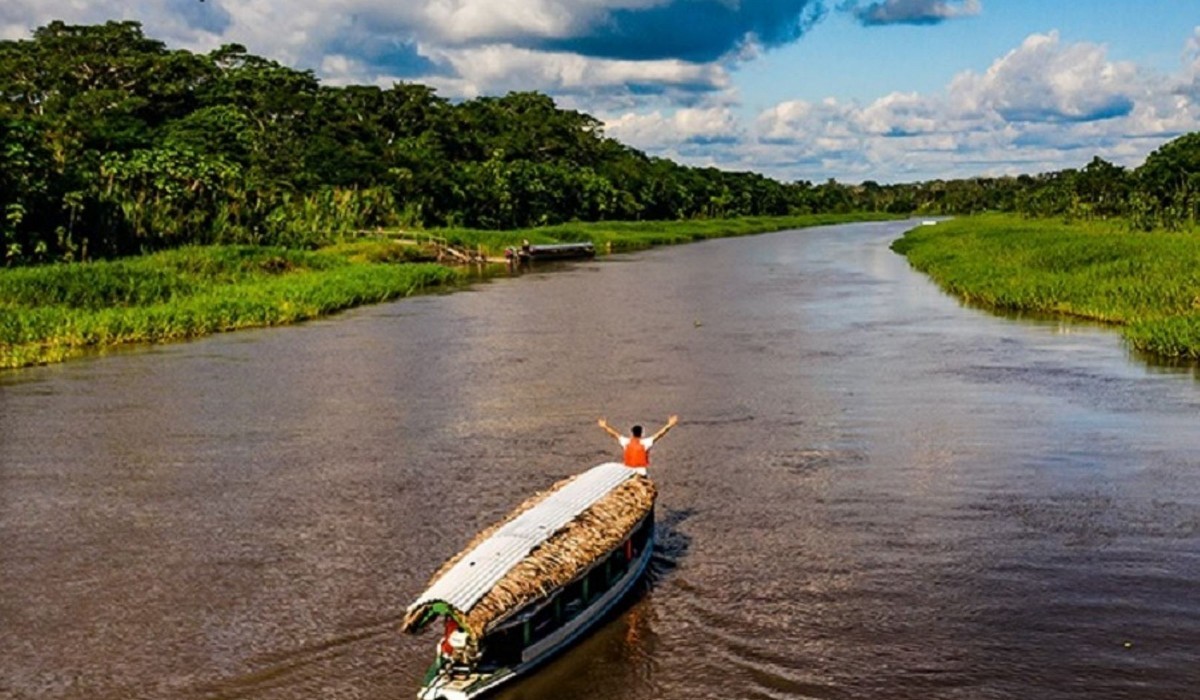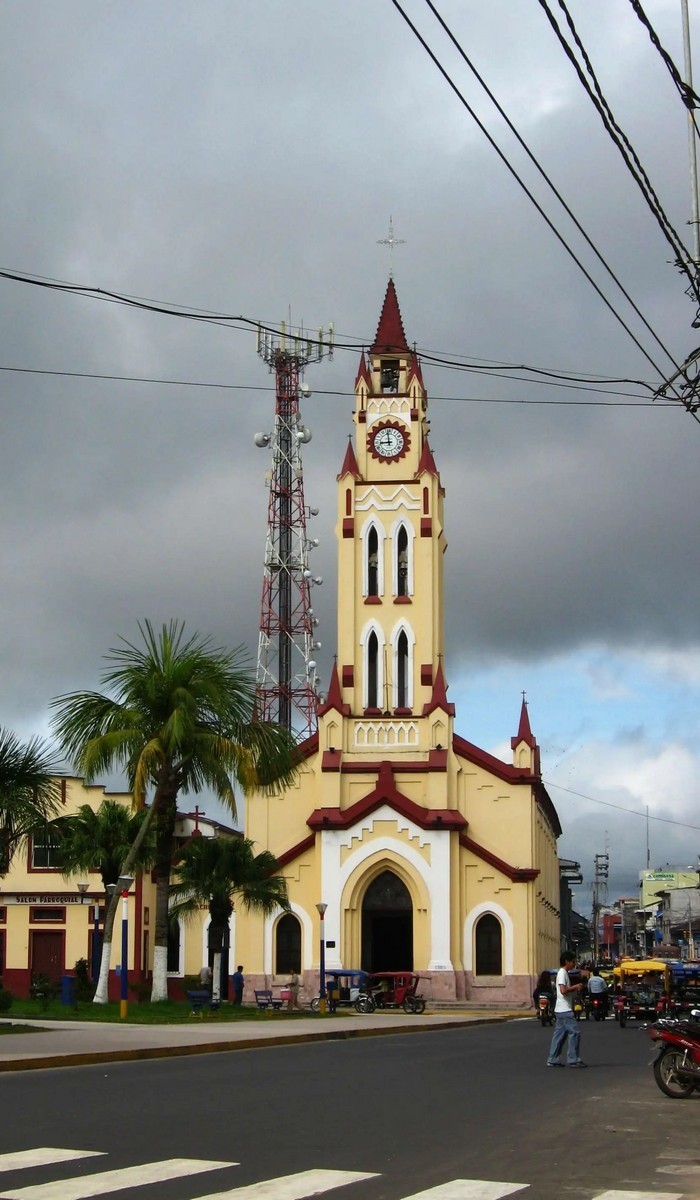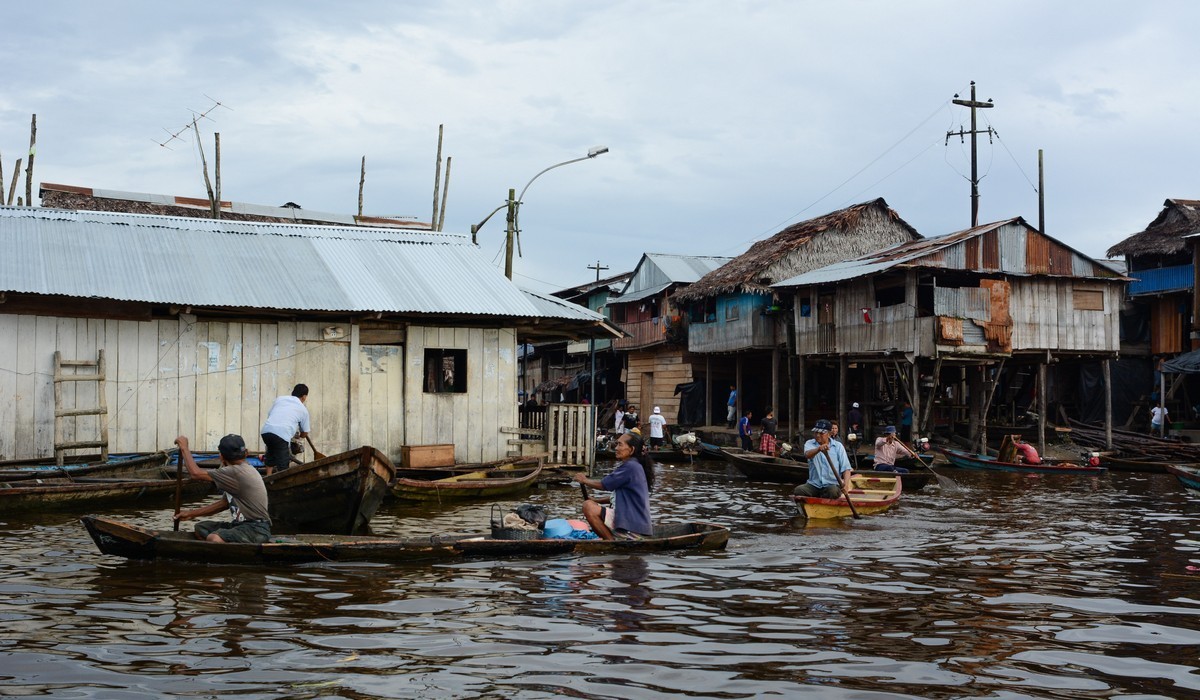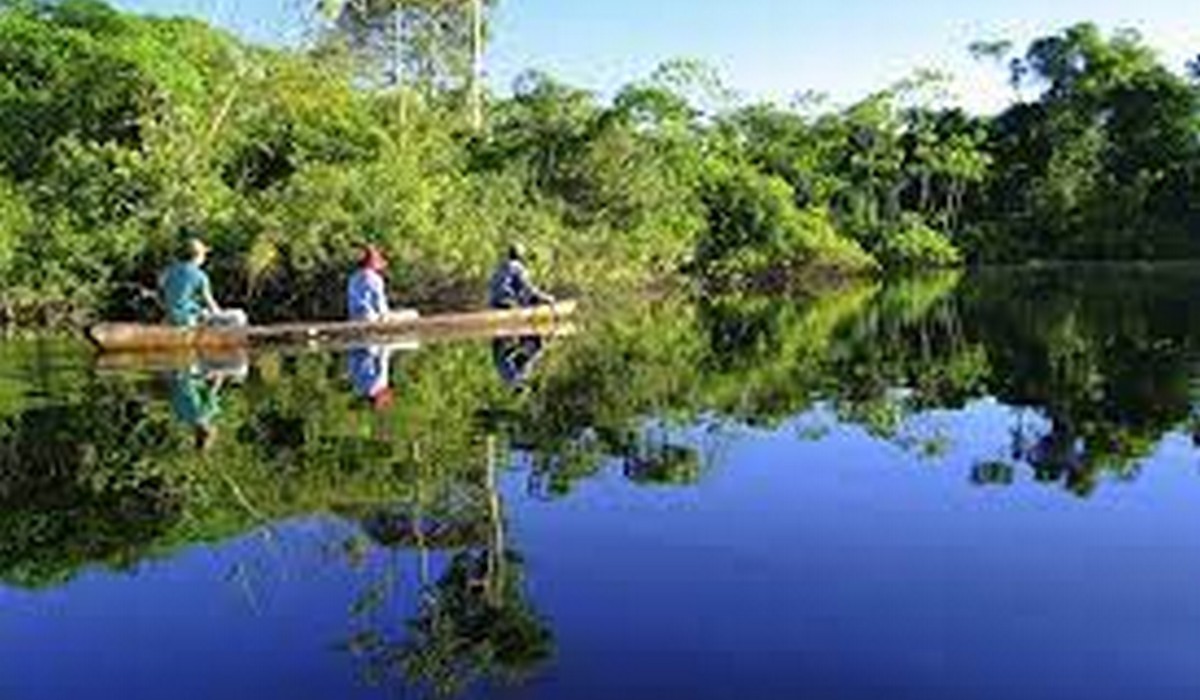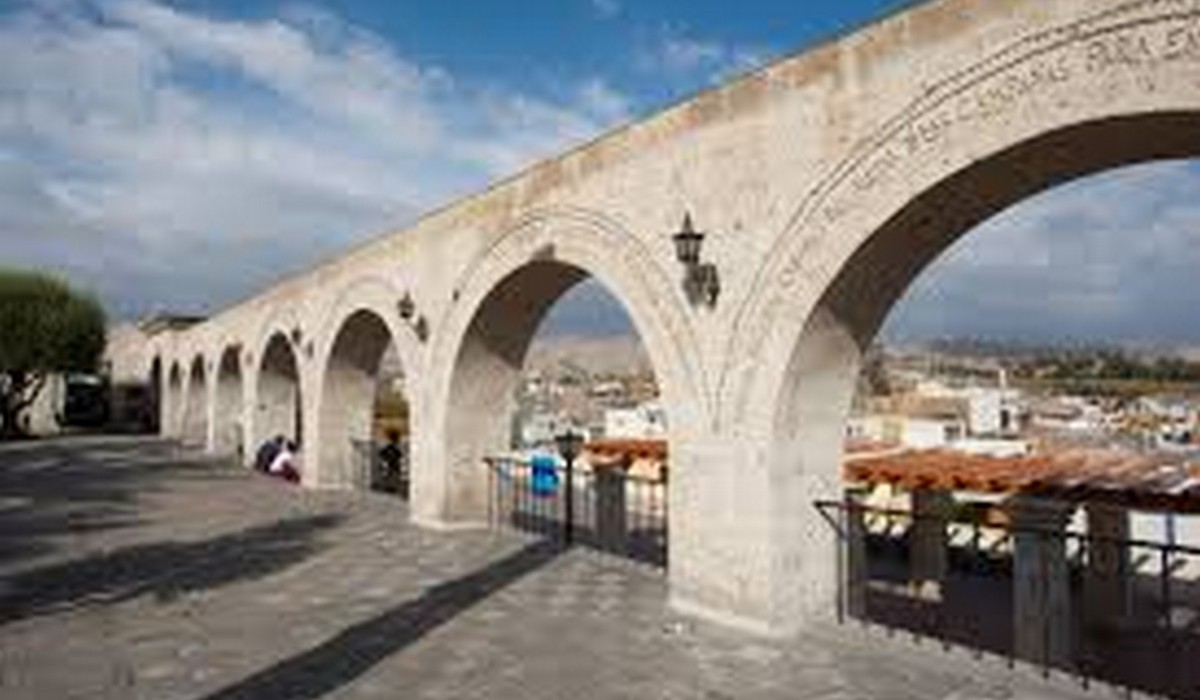Iquitos is a Peruvian city capital of the district of Iquitos and at the same time of the province of Maynas and the department of Loreto. It is the largest metropolis in the Peruvian Amazon, and it is the seventh most populous city in the country according to the National Institute of Statistics and Informatics in 2017, with a population of 479,866 inhabitants. It is established in the Great Plain and surrounded by the Amazon, Nanay and Itaya rivers and Lake Moronacocha. Together, it is constituted in Metropolitan Iquitos, made up of four districts: Iquitos, Punchana, Belén and San Juan Bautista.
The founding date of the city is uncertain, but historical documents affirm that it began as a Spanish reduction established by the Jesuits on the banks of the Nanay River around the year 1757 under the name of “San Pablo de Nuevo Napeanos”, a town inhabited by indigenous people. napeanos (yameos) and iquito. By 1999, the city was finally consolidated into its four municipalities.17 The largest extraction industries in the city are made up of logging, fishing, oil, mining and agriculture, and it has a high economic activity in tourism, crafts, bakery and carbonated drinks and beer.
It has been one of the major cities, along with Manaus and Belén del Pará, of the enormous Rubber Rush (1880-1914). This period Europeanized it on different levels, economically and socially. This identity endured in the architecture and historical treasures, and in the present, it boosted tourism exponentially. It has become an important cosmopolitan city with strong Amazonian roots, with a remarkable historical complex, characteristic gastronomy, Amazonian landscapes, a singing accent, nightlife, and a growing cultural movement. In 2012, it registered 250,000 visitors, and has received more after receiving the Amazonia award as a natural wonder of the world.19202122 Its international airport hopes to become one of the six international air hubs in Peru. The city was listed at number 6 on Lonely Planet’s “Top 10 Cities of 2011” list, and has been reaffirmed as one of the most remote cities in the world by The Guardian, listed alongside Petropavlovsk-Kamchatsky (Russia). , Nuuk (Greenland), Perth (Australia) and Mêdog (China).
The Monumental Zone of Iquitos contains several Cultural Patrimony of the Nation: the Cathedral of Iquitos, the Iron House, the Old Palace Hotel, the Cohen House, the Morey House and more than 70 buildings. Other well-known landmarks are the Iquitos Plaza de Armas; the Jirón Próspero, a street that conglomerates several commercial and historical places, and the busy Barrio de Belén, often nicknamed the “Amazonian Venice”. The city is also home to the Amazon Library, one of the two most important in Latin America.
The city only has an air and river connection to the rest of the country and with the sole exception of departmental route LO-103 (known to the south as Vía Interprovincial Iquitos-Nauta), a long highway that connects Iquitos with Nauta to the south and other towns to the north until reaching San Antonio del Estrecho.27 Following the course of the Amazon, marine vessels of 3,000 or 9,000 tons28 and 5.5 m (18 ft) deep can arrive, coming from the Atlantic Ocean, which is why it is considered which is the most populated city in the world that does not have land access to the sea. Due to its geostrategic location, it is an important internal port that enables the connection between the Pacific Ocean and the Atlantic Ocean.
TOPOGRAPHY
It is located in the northeast of Peru, northeast of the department of Loreto, and in the extreme south of the Province of Maynas.32 Located on a plain called the Great Plain, the city covers an area of 368.9 km² (142.4 mi²) and covers part of the districts of Belén, Punchana and San Juan Bautista. It is located approximately at the coordinates 03°43′46″S 73°14′18″W at 106 m s. no. m. Therefore, it is the northernmost city in the country.
It is surrounded by the Port of Iquitos that make up the Amazon, Nanay and Itaya rivers. It is located on the left bank of the Amazon, which provides a significant economic life, which includes trade and transportation.32 The Itaya and Nanay rivers are natural limits to its physical expansion and therefore forces urbanization by spillage to the south, there is also a slight population density towards the Center of Iquitos. Near Iquitos there are also countless lagoons and lakes, prominently Lake Moronococha, which delimit the city to the west. This hydrographic feature turns the city into a river island.
Geologically, the city is settled on a formation of Upper Tertiary-Quaternary origin, made up lithologically of dark gray shales, poorly consolidated, with remains of flora and fauna, and numerous lenses of white sand with abundant silicon; the residual soils are sandy, almost clayey and of variable depth. Physiographically, it is a hazy landscape due to the undulations of the soil caused by rain erosion.
CLIMATE
Usual rainy scenario in Iquitos at the beginning of April, during the most humid stage of its rainy season.
According to the Köppen climate classification, Iquitos experiences an equatorial climate (Af). Throughout the year it has constant rainfall, so there is no well-defined dry season, and it has temperatures ranging from 21 °C to 33 °C. The average annual temperature is 26.7 °C, and the average rainfall is 2616.2 mm per year. Because the seasons of the year are not sensitive in the equatorial zone, it has exclusively two seasons.
It has a rainy winter, arriving in November and ending in May, with March and April tending to include the wettest weather. Rainfall reaches around 300 mm and 280 mm, respectively. In May, the Amazon River, one of the city’s surrounding rivers, reaches its highest levels, steadily dropping by 30 or 40 feet to its lowest point in October, then rising steadily cyclically.
Summer offers a very different climate. Despite the fact that July and August are the driest months, there are still some periods of downpours. Sunny days and good weather are common, and it is used to dry things, since the high temperatures are 30 °C and an average of 32 °C. The precipitations felt throughout the years are more abundant than those of Ayacucho, Cusco and Lima.
It also experiences microclimates: rain or drizzle may be present in some areas of the districts, while other parts of the city are slightly cloudy or clear. The temperature may vary. The urban climate is slightly warmer than the natural climate, and would be reflected by the thermal sensation. It also suffers from an urban phenomenon called a heat island, in which the heat has difficulty dissipating at night.
In July 2000, the most extreme cooling was registered in Iquitos: the temperature dropped incredibly to 9 °C, forcing the population to be very sheltered.
FLORA AND FAUNA
Due to its location in the Peruvian Amazon, Iquitos has a natural landscape of immense biodiversity. Prehistorically, the ecosystem surrounding Iquitos was dominated by Purussaurus, Pericotoxodon, Langstonia, Boreostemma, Gryposuchus, Granastrapotherium (similar to tapir) and Megatherium (possible origin of legends). In addition, six Miocene crocodile fossils were discovered, including three new species (Kuttanacaiman iquitosensis, Gnatusuchus pebasensis, and Caiman wannlangstoni), and the dwarf caiman Paleosuchus.
Currently, its ecosystem remains diverse. The flora is made up of 850 species, among them palm trees and 22 species of orchids, who contribute the forest attraction within the urban landscape. The royal victory is also present. The extensive forests settled within the metropolitan influence are home to a fauna with 130 species of mammals; 330 of birds; 150 reptiles and amphibians, as well as 250 fish. Within the city, the rock pigeon (Columba livia) inhabits, especially in the Plaza de 28 de Julio. The transitory presence of bull sharks (Carcharhinus leucas) has also been recorded, arriving from the Atlantic Ocean, traveling 3,360 kilometers to Iquitos.
The Iquitos floodplain forest is the representative ecoregion that surrounds the city, and is characterized as a várzea forest. Its alluvial detail is the reason why intense rainy seasons easily flood these areas. In their natural cycle, trees drop their leaves and other biological residues to the ground, where they become humus. The rain carries these nutrients towards the rivers, which gives that blonde color, called tannin. Immediately, this cycle repeats itself.
The great biodiversity that Metropolitan Iquitos houses and protects is extremely important, and this is intrinsically related to its urban planning, which sets a limit action in areas where farms should not be built. Because of this, the appearance of informal settlements is seen as a risk.
NATURE AND ZOO RESERVES
Nature reserves are important for the protection of the Amazon ecosystem.
The Allpahuayo Mishana National Reserve is a protected area with very high levels of biodiversity. The reserve is located 20 kilometers from Iquitos, being reached by Route LO-103. The ecosystem it houses is part of the lower basin of the Nanay River, specifically in an area called the “Napo Ecoregion”, which contains exceptional Amazonian biodiversity, including its peculiar white sand forests. The Napo Ecoregion is home to 112 species of amphibians, 17 species of primates, 1900 plant species and perhaps more than 600 bird species. Some animals of ecological importance due to their rarity cared for in the reserve are the supay pichico (Callimico goeldii), tocón negro ( Callicebus torquatus), Equatorial huapo (Pithecia aequatorialis), Gentry’s Antwren (Herpsilochmus gentryi), Mishana’s Tyrant (Zimmerius villarejoi), Allpahuayo’s Antbird (Percnostola arenarum), Chestnut-tailed Antbird (Myrmeciza castanea centuculorum),64 the Cotinga Pompadour ( Xipholena punicea), manakin of varillal (Neopelma chrysocephalum), among others. The Iquitos perlite (Polioptila clementsi) is an endemic species of the reserve and is considered a symbol of Iquitos.
The Quistococha Tourist Complex is characterized by its variety.69 The place is located 6 kilometers from Iquitos via Route LO-103 and, with an extension of 369 hectares of natural forest, has a small zoo, a serpentarium, an aquarium , a nursery and an artificial beach called Tunchi Playa.
The Pilpintuwasi butterfly farm is located in Padre Cocha, Iquitos, and includes more than 40 species of insects, mainly butterflies. Next to the butterfly garden is the Amazon Animal Orphanage, in charge of rescuing animals.

